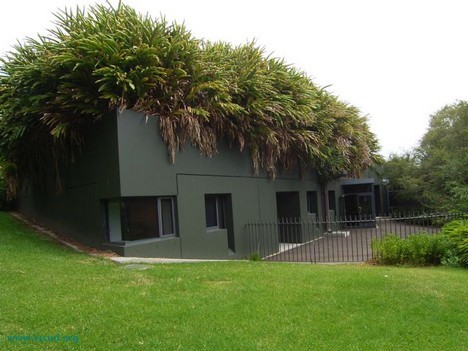
Green roofing is an exciting new prospect for the roofing industry and the world. Green roofing has the potential to take wasted space on the millions of roofs needlessly absorbing the suns energy and convert that into something useful. Green roofing does present some unique problems. Usually roofs are designed to remove water as quickly as possible, but vegetation needs water, and there will be an additional layer of sometimes wet growing material for the roof to support. This means that the roof must be much stronger to support all this additional weight. The roof also needs a very effective drainage system that keeps the part below the growing material dry.
The soil and vegetation layer of a green roof usually consists of low maintenance plants. Therefore the typical roof does not need a irrigation system. If the roof is more for looks or to play on, a irrigations system may be installed. These should be drip systems that deliver the water to the roots to minimize evaporative water loss. But most will let the plants grow naturally. A Denver roofing contractor may have to consult with a nursery on the correct type of plants.
The scientists behinds these roofing systems divide them into intensive and extensive categories. The extensive roof is also called an eco-roof. These are thinner and lighter, but the reduced soil limits the vegetation options. The common plants are mosses and grasses. These grow in a low profile and require little maintenance.
If your Denver roofing contractor is more ambitious, you could try an intensive roof. These have enough soil to make a full garden. This type of roof is ideal if you are looking to make a rooftop garden oasis. Small trees, and little patios can even be housed with enough structural support. If you do get your Denver roofing contractor to install and intensive roof, you will probably have to hire someone to maintain it.
Green roofs are very good insulators and reduce the heat of the roof overall significantly. This saves on heating and air conditioning costs. This can help reduce the heat island effect in urban environments. The plants and soil also filter the air and water in the area. Green roofs are especially popular in urban environments because they add yard space in areas where this was impossible.
No comments:
Post a Comment